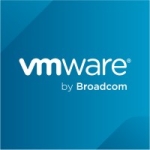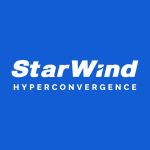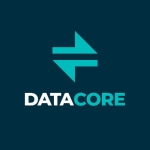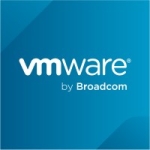What is our primary use case?
Our client was using ESXi and Microsoft Hyper-V clustering, but patching and upgrading ESXi and Microsoft Hyper-V clusters was very tedious. That was their pain area. We understood their pain area and positioned Nutanix there. Instead of the orthodox three-tier architecture, they chose Nutanix. The benefit of Nutanix is that there is a very simple upgrade path. It is done with a click. The storage part is simple. It has a very easy UI, which is a USP of Nutanix. The client is very happy.
We have multiple such clients, and our clients are happy with it. For more than 10 clients, I myself have done the deployment of the Nutanix cluster. One of them had a cluster with 24 nodes.
How has it helped my organization?
In a single pane of glass, you get all the insights about your infrastructure. Earlier, in the orthodox three-tier architecture, you had multiple UIs. You also needed multiple expertise to take care of things. It used to take more time to troubleshoot and identify where exactly the issue was. You had to get your analytics, get your logs, and then troubleshoot. All this is avoided with the Nutanix architecture. It is hardware agnostic. For example, if an organization has a contract for the HPE hardware or they have an HPE footprint or a Dell footprint in their DC, they can go with that particular hardware and have Nutanix on top of it. Nutanix does not force you to buy only Nutanix hardware. Other vendors, such as VMware, make you buy their hardware so that their product works fine, but that is not the case with Nutanix. It is hardware agnostic.
The applications that are run on Nutanix are client-side applications. There are banking or financial applications. They also have Citrix on Nutanix for the virtual desktop. They also have Oracle Database and SAP running properly on the Nutanix hardware or architecture. You can put any application available in the market, such as Oracle Database, MySQL, or NoSQL, and you will not have any slowness or anything like that with that application. Every application works smoothly on the Nutanix platform. It is all tested.
It is much easier to deploy Nutanix as compared to other solutions. It saves you deployment time. Usually, in a big organization, the planning itself takes around a month. You also need permissions, and then you deploy a solution, so deployment takes time, but that is not the case with Nutanix, which is an advantage. You can get all necessary permissions from your management and then in one day or half a day, you can have your cluster. If you purchase the whole Nutanix portfolio with Nutanix Karbon, Nutanix Flow, and other solutions, deployment is very easy. You can put it into production.
It reduces the downtime. A cluster has multiple nodes in the backend. If you want to upgrade the firmware or you want to upgrade AHV or the hardware, it will do that one by one. It will put some nodes into maintenance mode. It will move some of the virtual machines to other nodes in a cluster. It will take care of the redundancy part. It will take care of your data. The data also gets migrated to those nodes so that it is available locally. You avoid all the hops that are there in the three-tier architecture. It reduces the hops and the time to access your data and gives you the output. All this is taken care of in the Nutanix architecture.
Snapshot is one of the key features that reduce downtime. It gives clients more power to define their RTO and RPO, which is a valuable aspect of the Nutanix architecture. Even in the case of DC/DR, if your DC goes down, you can use the data protection domain and get your DR site up and running. It helps clients achieve their RTO and RPO.
Our clients could realize its benefits in a week. I have worked on more than 10 major deployments. They already had some pain areas, and they wanted to mitigate those areas. We positioned Nutanix and did the PoC, and they were already happy with this solution at the PoC level. We did not have to do deployment and put it in production for them to see its benefits. Based on my experience with Nutanix, in a week's time, they get to know its features and the fact that it works smoothly.
All applications have dependencies. They have some hardware or networking requirements. You need to have the hardware accordingly in your DC. By buying Nutanix, our clients have managed to avoid all these requirements. In a single box, they get all the things, so they do not have to worry about the backend. Their applications work smoothly. They can have any application. They can even have VDI applications such as Citrix VDI or VMware Workspace on top of Nutanix. It supports all the platforms. Our clients are very happy with Nutanix. They do not have to do any hardware upgrades.
It eliminates the legacy infrastructure. That is the main purpose of HCI. For HCI, Nutanix has been in the number one position for many years. In the three-tier architecture, there used to be a frontend application, a middleware, and a backend database. On the hardware front also, you had to put your servers, your SAN switches, and your backend storage. You had multiple footprints in your DC. You also had more power consumption. Nutanix reduces power consumption, troubleshooting, and maintenance. You do not need a separate team for maintenance. Irrespective of the hardware, you get a single point of contact for any support. All these solutions are consolidated under one roof, which is very beneficial.
We have done the whole DC migration to Nutanix. The client had five to six racks, and they got reduced to two racks by using Nutanix. It takes very less space. It helps to reduce your DC footprint and power consumption. Troubleshooting is very easy. You can also reduce the number of hops. It eliminates the whole process where the front end puts the request to middleware, which then goes to the backend and fetches the data from the storage. You can have your data locally, and then there is just a single hop. You get the output faster. It makes your applications run smoother and faster as well while responding to a request.
What is most valuable?
Single-click upgrades are the most valuable feature. In the sector in which we work, it is tough to have downtime and arrange firmware upgrades. If something goes wrong, you need to do a fallback or troubleshoot more. That can be totally avoided if you are using Nutanix in the backend for your hypervisor or clustering part. That is one thing.
Another thing is that you get CVMs similar to the number of nodes. CVM handles your backend storage infrastructure. It is underlying your hypervisor. If you have seven nodes, you will get seven CVMs, which is a good thing.
The availability of your data is also valuable. Whenever you shift or migrate your virtual machines inside a cluster, your data also follows that. It creates multiple copies of the data and keeps it ready in the backend for redundancy, which is another good point.
With Nutanix Prism, you get a single dashboard for everything. It shows you whether your data resiliency is okay, whether your nodes are okay, or whether your networking part is okay. It is another USP.
What needs improvement?
Our client had some old Citrix Xen servers for which there is no direct migration. Nutanix has a move utility for Microsoft Hyper-V clusters or VMware clusters. You can easily migrate them using the move utility, but the Xen clusters cannot be migrated in a simple way. That is the only thing that is lacking, but nowadays, no one uses the Citrix Xen server for their clusters. Everything else is already there. Nutanix keeps on upgrading its hardware's or hypervisor's capability to be able to support new technologies.
For how long have I used the solution?
I have been working with Nutanix for more than four years.
What do I think about the stability of the solution?
It is quite stable. It is very robust. You can compare it to any old three-tier architecture solution. It is a much better solution. It is a much better approach.
What do I think about the scalability of the solution?
It is very easy, and it is very scalable. You can scale it vertically and horizontally. It has good scalability. If you have proper resources but only the storage needs to be upgraded, you have that flexibility where you can only purchase a storage node and add it to your cluster. If you want more compute resources, such as more CPU or RAM, you can put more nodes and add them into the cluster. There is no downtime. It is very simple and smooth.
In terms of the end-users, there are more than 3,000 users at a single location. There are multiple locations. There are about four locations in India and then for DR, they have two or three locations. This is basically a banking client, so there are multiple locations where they have put the Nutanix clusters. Even on the DR site, they have Nutanix. They have a six-node cluster where all the data is replicated. It is a multi-site deployment with about 16,000 users.
How are customer service and support?
Their support is also very good. If something goes wrong, they will provide support. You just need to raise a case with their support. They come online and fix the issue as soon as possible and get your production going.
They also support you at the deployment level. Many times, we faced some challenges because of networking, which plays an important part in deployment. If something is not proper in networking, the deployment does not happen. In such cases, you can raise a case with Nutanix support, and they will help you with the deployment.
I would rate their support a ten out of ten.
How would you rate customer service and support?
Which solution did I use previously and why did I switch?
We did not use a different solution. There was mostly the three-tier architecture, and people used to replace or upgrade at the storage level, networking level, or server level until HCI came into the picture. With HCI, all those things went away. It reduces your DC footprint and gives you a powerful solution. There are different HCI players in the market, such as VMware vSAN and HPE SimpliVity, but wherever we have positioned Nutanix, clients have been happy. We had positioned HPE SimpliVity for a client, but in the next tech refresh, they got it replaced with Nutanix.
We have had some clients who had their workloads on Azure and for their Oracle Database and SAP environment, they had purchased a Nutanix box from us. They had put their on-premise applications on Nutanix. When they saw those applications working so smoothly, they brought their Azure workload on-premises and bought another Nutanix box. I was a part of that migration.
Nutanix Prism dashboard and one-click upgrades are the points that make Nutanix much better as compared to other solutions. They give you a single pane of glass. The UI is very good. It gives you an experience similar to Azure or AWS UI. You can have all the insights about your hardware in a single pane of glass, and it is very easy for management as well to do regular reporting. They can make fast decisions regarding their futuristic plans.
How was the initial setup?
Most deployments are on a hybrid cloud. Some of the deployments are on a private cloud. Our clients have Azure. They also have Nutanix Cloud.
The initial setup is very simple. You only need to get your foundation VMs set and then you can have it deployed. You need to get your appliance switch and connect all your client's servers to that switch. It is very simple. You can even start it and leave it. It will format all those nodes and make them ready. The networking part is also easy. Whether it is a plain network or you are putting in a VLAN, it is very easy. There are only a few commands, and then you can deploy it.
For a 24-node cluster, it took us only about six hours, which is not the case with the three-tier architecture. It takes six hours just to plan how to position or get those nodes up and running in production. That is at the very initial level, and then it takes about a month's time to get the node cluster into production. That time is saved with Nutanix. In just six to seven hours, you can get it going in production.
We have a single person for deployment. I myself go to DC and do it. There is one more person to do the rack stacking of all the hardware. A single person is enough to get the clusters ready and put them in production.
In terms of maintenance, it does not require any maintenance that requires any downtime. It is very simple. If some new features get added, it will show them on your dashboard, and then you can upgrade to the newer version.
What was our ROI?
There is an ROI. With the three-tier architecture, you have to purchase separately for the storage, database, applications, etc. There is a software-layer investment, and then there is a hardware-layer investment. In the software-layer investment, you have to take backups and create a backup infrastructure. You also have to pay for the expertise. You need people for monitoring and taking care of your hardware. You need storage administrators and network administrators. With Nutanix, everything gets consolidated in a single box, and you also save the cost of expertise. There is a good return on investment.
What's my experience with pricing, setup cost, and licensing?
Its licensing is fine. They provide the flexibility to choose from different options. You can go with the standard plan. You can go with the pro or platinum plan. Generally, our clients go with the pro licenses, but if you go for the platinum license, you get even more capabilities. Their starter license is also quite good.
About 95% of our clients go for the pro license, but we also have some clients who do not need enterprise-level features, so they go for the starter or standard license. They do not need to pay anything extra in addition to the standard licensing fee.
What other advice do I have?
Clients usually evaluate a product when they have a pain area, they have a tech refresh, or they want to adopt a new technology. For example, if they are on the old three-tier architecture, they might be curious about HCI. We explain all the benefits of not only the HCI technology but also specifically of Nutanix for HCI. We explain how it addresses their pain area or needs. It has low overheads, so the cost of ownership is also low. They get a robust environment, and it is very easy to handle. It saves time. You do not have to go to DCN, mount storage, deal with SAN switches, etc. All those tasks are time-consuming. The maintenance and configuration take time. Nutanix saves you time. You can fulfill your needs or your clients' needs. The deployment is easy. Sometimes, our clients get astonished at the speed of deployment because they were expecting it to take weeks or months. It is simple but powerful. It is very easy.
Overall, I would rate this solution a 10 out of 10.
Disclosure: My company has a business relationship with this vendor other than being a customer. Partner



















